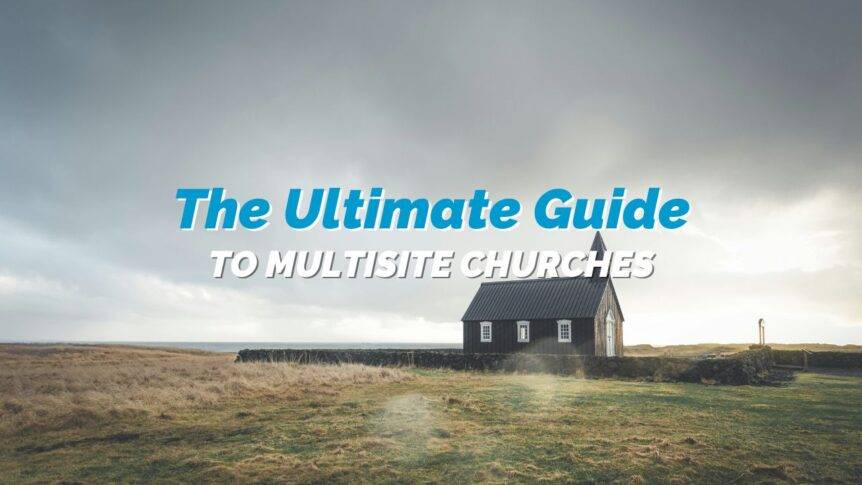What do you think of when you think of a “multisite church”?
It’s more than just multiple churches. There are several different models of a multisite church from the “franchise model” to the “campus model”.
Think about church growth, expanding your reach beyond your campus, and creating a larger family. Multisite churches are popping up worldwide, especially in the last ten years. What is the appeal, and how is it possible? Let’s go over exactly what a multisite church is and the steps to get there.
Estimated reading time: 11 minutes
Table of contents
What is a Multisite Church?

A multisite church is exactly what it sounds like. One church with multiple sites.
The separate locations in each multisite model call themselves one “church”—singular. They are connected by a budget, brand, and board. The share a theology, vision, and philosophy of ministry, as well as the administrative mechanism for coordinating their work together.
There is always one “main” church that everything else extends from. Whether that be the preaching or worship style, each location falls under the “main” campus.
History of Multisite Churches
The concept of multisite churches is relatively new. While the first multisite church appeared in the late 1980s, the movement fully took off with the technological revolution of the 1990s. The invention of inexpensive video broadcasting and streaming technology has led to an explosion in the number and size of multisite churches since the late 1990s.
By the late 1990s, there were over 100 multisite churches in the United States. Today, church statistician Warren Bird estimates that there are between 5,000 and 8,000 multisite churches in the US, totaling 16,000 congregations. There has definitely been a multisite movement in the last 10 years.
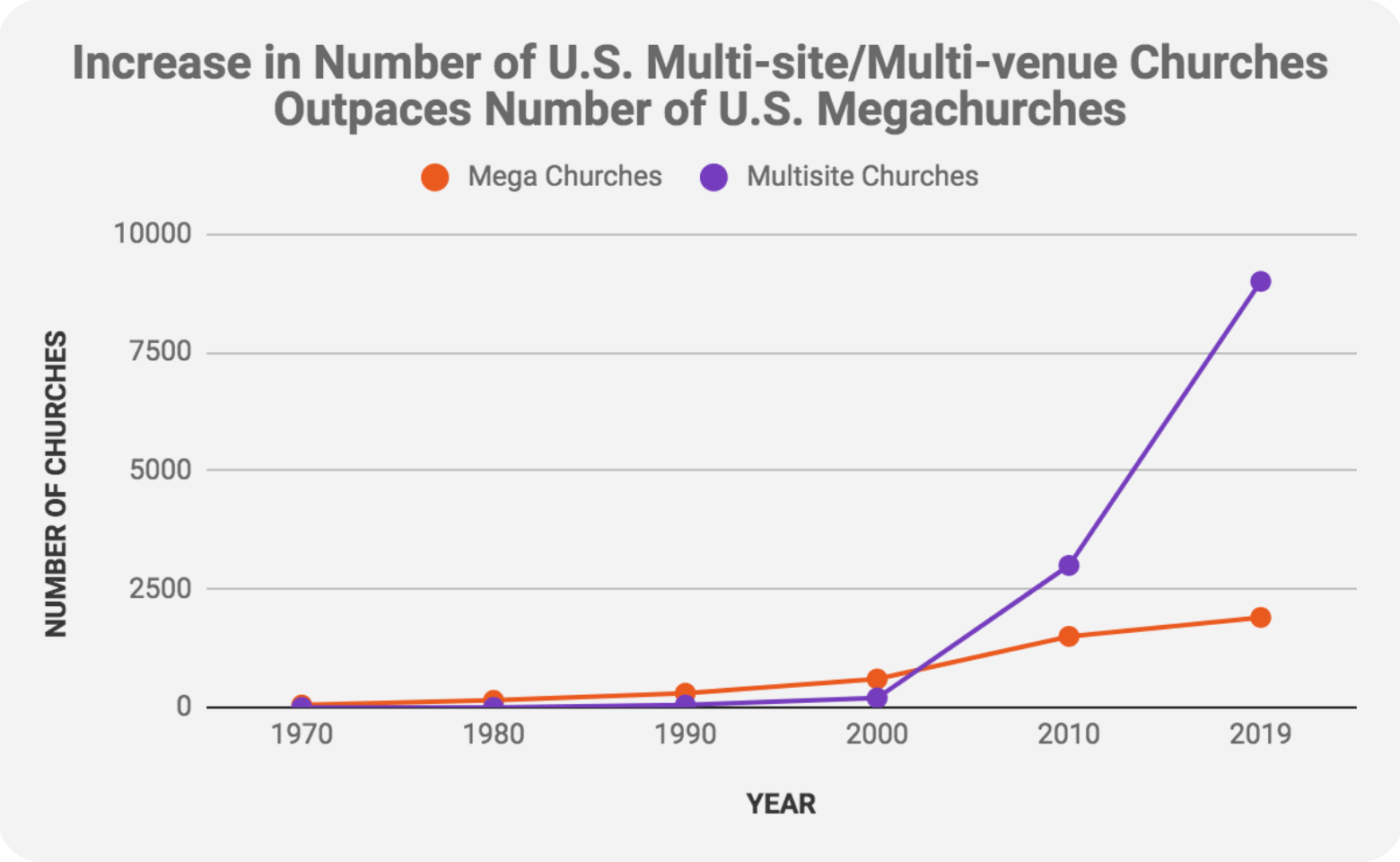
Although estimates vary somewhat, this would mean nearly 5% of the congregations meeting on Sunday mornings are part of a multisite church. Unsurprisingly, over 80% of the 100 largest U.S. churches are multi-sites. In recent years, however, the multisite trend has increased in smaller churches (~100-400 in weekly attendance). While statisticians scramble to figure out what counts as a multisite church and institutions attempt to make sense of the new reality.
Why Have a Multisite Church?

It’s important to first clarify whether or not your local church is healthy enough to move forward with multisite. If so, the next step is to define your why.
For multisite to work, everyone needs to be on the same page about why the church is engaging this multisite strategy from the beginning. Differing team members will likely have different purposes and expectations for the expansion initially, so getting on the same page early in this process sets the entire team up to be aligned and unified.
The right reasons for being multisite might include reaching more people, increasing outreach, maximizing resources, and increasing volunteer engagement. The wrong reasons would be because “everyone else is doing it” or because you think it will help reverse the plateau or decline of your church.
The Benefits of the Multisite Model
Increased Growth Potential
Being a larger church and having more members isn’t the most essential focus for a church. But with about 4,500 churches closing their doors each year, a senior pastor is increasingly preoccupied with weekly attendance. That’s why a boost in membership size is one of the most obvious benefits of going multi-site.
Wider Reach
Churches with multiple locations have the opportunity to reach more people than single location ministries. More campuses mean a larger geographic footprint, more worship space, and more chances for new guests to visit a church building.
New church campuses have an increased chance of being able to reach unchurched people. This is because nearly half of multi-site church campuses are in a small town or rural area. With megachurches primarily focusing on urban and suburban areas, these outlying areas are usually overlooked and underserved in these locations.
Casting a Larger Vision
Many churches decide to add additional campuses not only to grow in size or reach more people but to cast a larger vision. If those were the only goals, planting new and unique churches could be a better option. Instead, multi-site pastors view this as an opportunity to spread their church’s DNA with a larger network.
Some church attendees enjoy supporting a multi-site church precisely because they want to be a part of something bigger. They understand and appreciate being a smaller piece of an umbrella church with the impact on multiple towns and cities. This makes people feel connected to a larger whole with a shared vision and mission.
Shared Resources
An advantage of multiple campuses connected to one another is the ability to share and grow resources. This doesn’t just mean financial resources, either—this applies to talent, technology, and knowledge as well. Each location can support each other with a larger shared pool of assets.
More Active Volunteers
Nearly all multi-site churches have mentioned that they saw an increase in volunteers and lay participation after expanding to multiple locations. That makes sense because more campuses mean a greater need for leadership without immediately having the resources to hire more staff. This leaves openings for volunteer leaders to step into those roles and find a greater purpose within the ministry!
More Empowered Leaders
Similarly to more active volunteers, multiple church locations also allow younger internal staff members to lead. Studies show that 87% of campus pastors are trained and promoted from within the existing church’s staff. These are people in the ministry who might not have otherwise had the opportunity to be a pastor that early in their career. Meanwhile, they’re still connected to the larger ministry for support and encouragement from other trusted leaders.
Easier Church Planting
While multi-site churches are a growing trend, there’s another pattern happening at the same time. Some ministries are spinning off their campuses into their autonomous congregations. Just as there is a time to expand to multiple locations, there is also a time to let those locations be free to stand on their own. We’ll talk about this down below and what kind of multisite model this follows.
Multisite Church Models
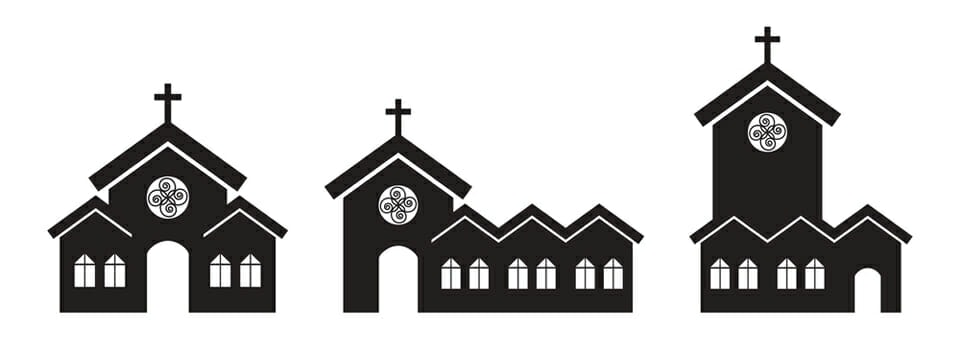
The Franchise Model
This is the most closely connected multi site church model. With the help of streaming technology, people at each location receive the same preaching content. Worship style, programming, and venue style are highly similar across all locations and are determined by a common leadership team. Each location has its own campus pastor, who handles on-site matters but does not preach or make church-wide decisions.
One of the best examples of the franchise model is Willow Creek Community Church, with its slogan “One Church. Multiple Locations.” Preaching is uniform across Willow Creek’s eight Chicago-land campuses. All aspects of a worship service are modelled after the South Barrington Central Campus and follow the leadership of that one location.
The Modified Franchise Model
Each location uses the same messages, but worship expression, programming, and venue style vary from location to location. A common leadership extends over every location, but each location has its own campus pastor who handles on-site matters and may occasionally provide content of their own. North Point Community Church (Alpharetta, GA) champions the modified franchise model.
North Point makes its teaching available at all of its locations, but each location may choose whether to use that teaching or build its own content around common themes. Worship style, service times and venue style are distinct to each location.
The Campus Model
More decentralized than the franchise model, the campus model is often effectively a coalition of churches rather than one church meeting in multiple spaces. Each campus has its own pastor (or pastoral team) who regularly provides live preaching. These churches are connected via branding, resources, and oversight. Content, worship expression, programming, and venue style are distinct for each location.
A great example of the campus model is Hillsong Church, which is composed of 100 campuses across the world (some of whom have their own franchise-style multi-sites). These campuses share resources, branding, and some oversight within one another. Each church functions as its own organizational entity, with campus-specific pastoral and worship teams.
The Reproducing Model
This model is often used by churches that are planting other churches. Typically, locations are planted by one church, receive ongoing support from the home church, and gradually become self-sustaining and self-run (often over a predetermined period of time).
This is the “temporary multisite” model, with the goal of producing multiple independent churches. Harvest Bible Fellowship follows the reproducing model, where one home church intentionally plants and invests in a nearby church, supports it for a time, and then allows it to attain independence.
Multisite Church Examples
There are some amazing churches across the world that follow the multisite model. From several campuses within their own city to campuses that span across the world, let’s look at a few that have done a great job!
Elevation Church
Elevation Church excels in a lot of things, and that includes the multisite model. They have 19 campuses spanning North Carolina, up to Ontario, Canada. They tune in to the main campus each Sunday and link across to hear one message.
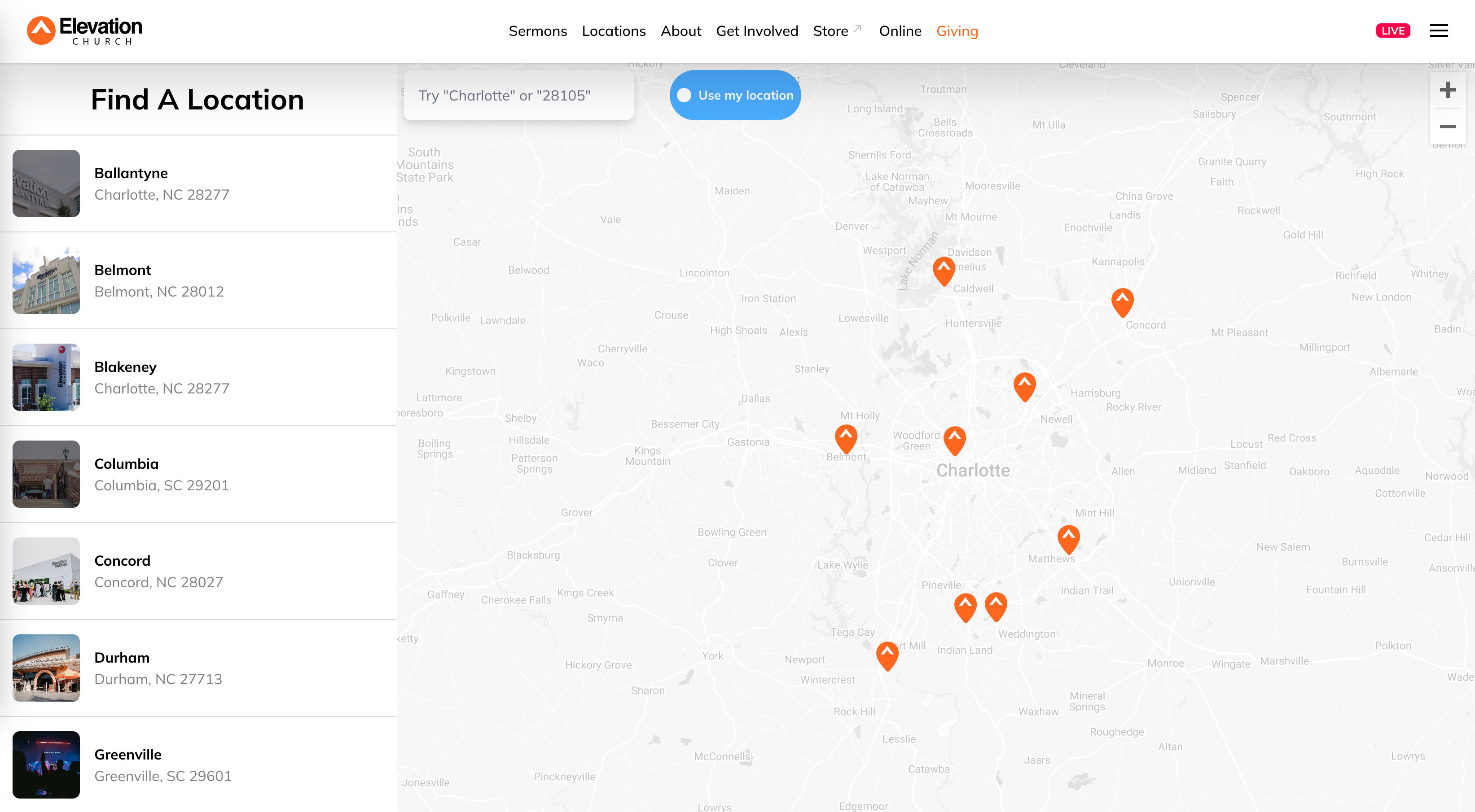
Hillsong Church
Known for more than their music, as mentioned above, Hillsong Church follows the “campus model” when it comes to multisite. In the founding country of Australia, they have over 30 campuses which expands globally, adding another 71 campuses. This is an amazing feat to accomplish, and one that can only be done through a great model and great communication.
Church of the Highlands
Church of the Highlands is based in Birmingham, Alabama, with 26 other locations across the state. Each campus has a campus pastor that will occasionally speak, but primarily Church of the Highlands follows the “Franchise Model” and tune in each week to the Pastor Chris Hodges in Birmingham.
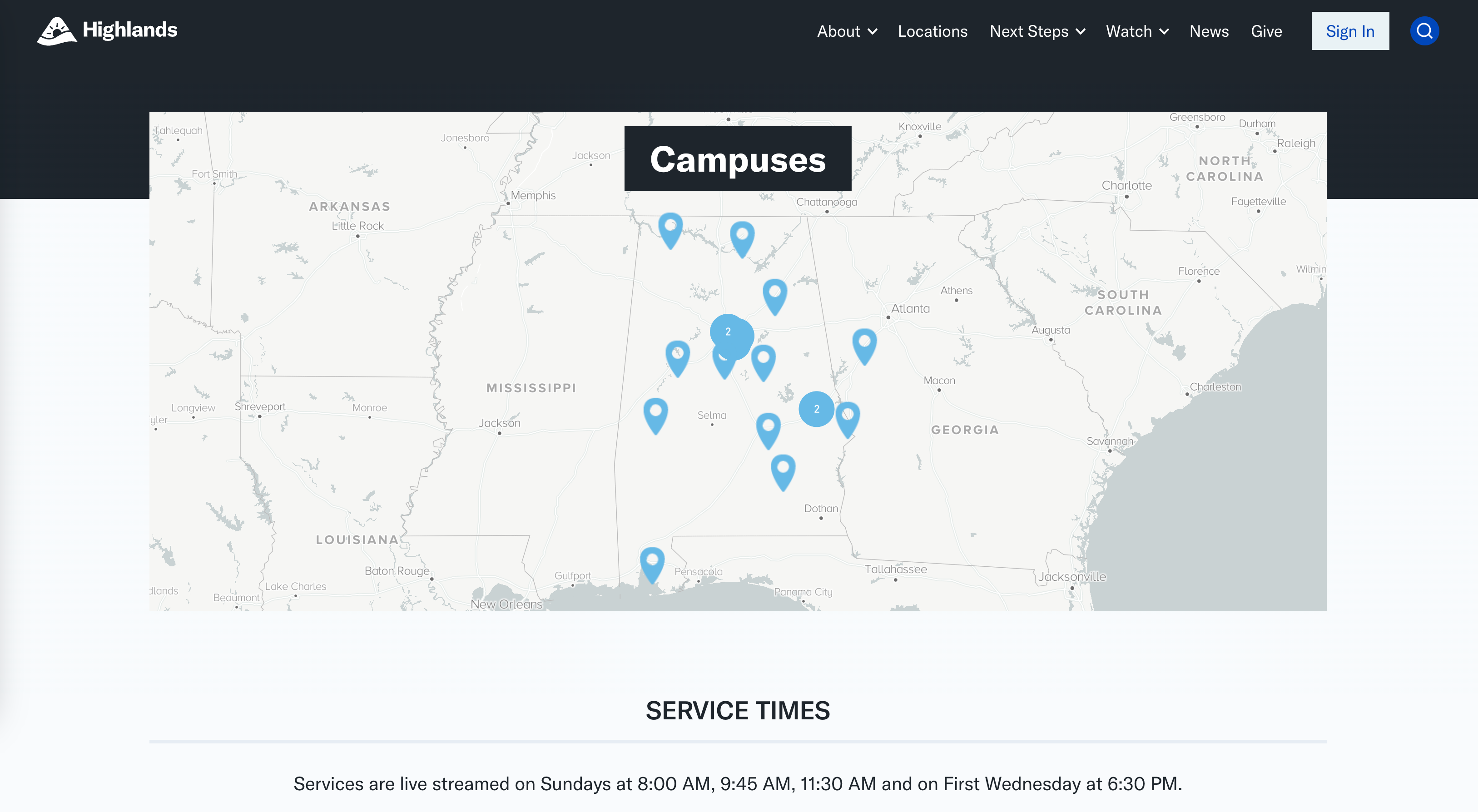
Saddleback Church
Founded by Pastor Rick Warren in Southern California, Saddleback Church now has 15 locations in California and 5 locations internationally! Much like many other multisite church locations, they tune in to watch the same message each Sunday and can be accessed online at a later time.
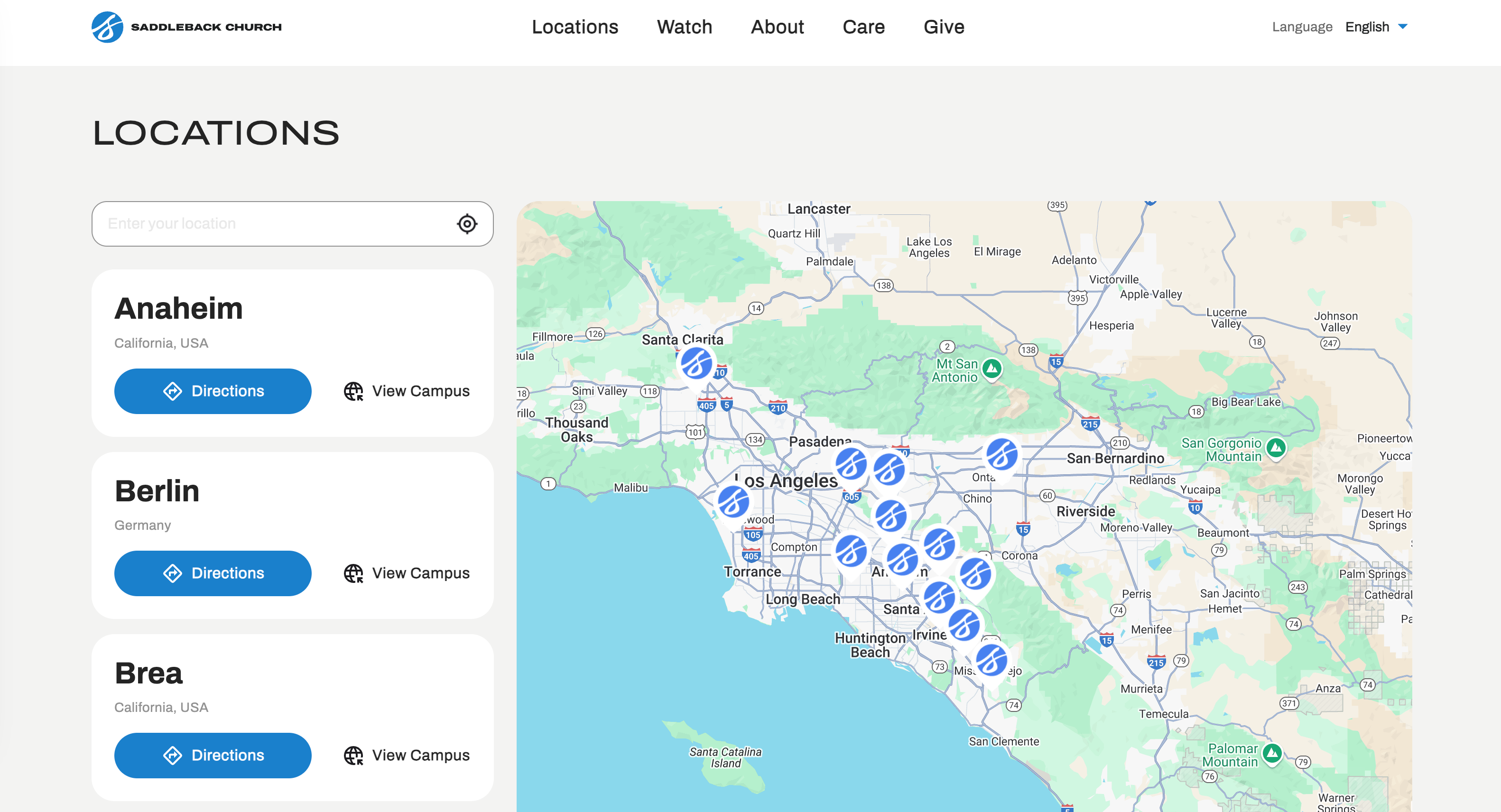
North Point Church
Located in Alpharetta, Georgia, North Point Community Church has seven other locations across Georgia. Led by Pastor Andy Stanley, this is a great example of a smaller model across just one state. Each campus tunes in each Sunday at the same time.
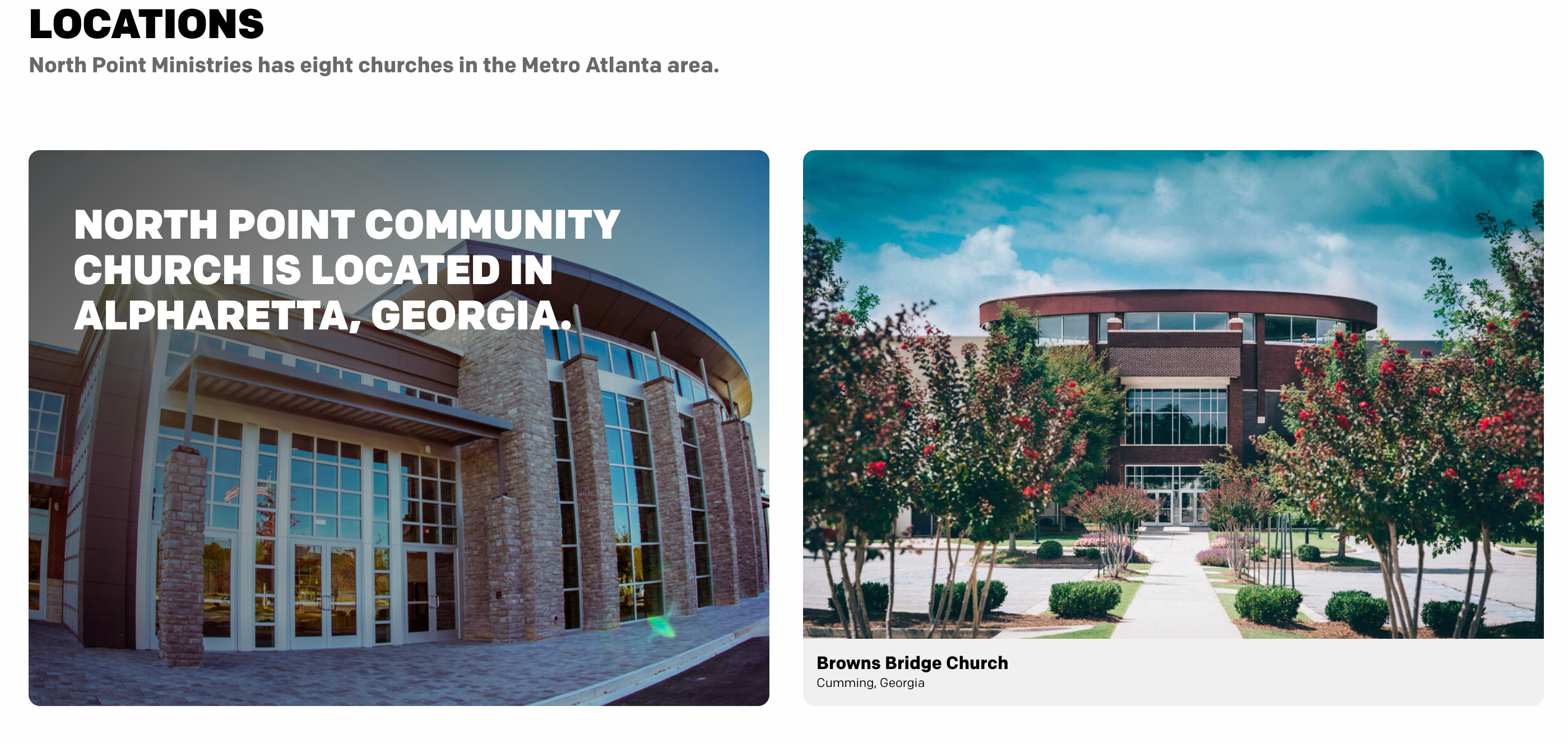
Is the Multisite Model Right For You?
A successful launch is dependent on building a strong ministry team, primarily through volunteers. Here are the three steps to building and equipping a healthy campus launch team:
- Evaluate current staff and volunteer capacity and health. Make sure you have leaders with the right character, chemistry, competence and capacity to fulfill the roles you need.
- Prepare for a launch of 2x the size of your core team. For a healthy launch, we recommend a core team of 100, at a minimum, who live in the area where you want to put a campus.
- Be strategic with staff roles (and then empower a lot of volunteers). We recommend 1 FTE (Full-Time Equivalent) for every 150 projected attendees at the campus! That means you’ll need many volunteer leaders to fill other critical ministry roles
If this sounds like something you’re prepared to do, then the multisite model might be a great fit for you! Everyone wants to succeed, so it’s best to go in prepared for what to expect.
Communication is an often-overlooked component to an effective multisite strategy. If you are committed to being one church in multiple locations, it’s important that your communication and branding is consistent.
Understanding Multisite Churches
We hope that after reading what a multisite church is, you’ve come to a better understanding if it’s the right fit for you and your church. It’s a big step, and one that will take time. This won’t be a decision that can be rushed. Thankfully, there are plenty of great examples as listed above to see that it can be done and done well!

